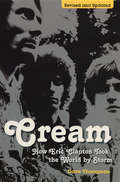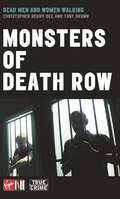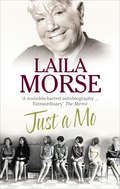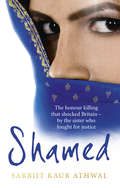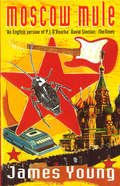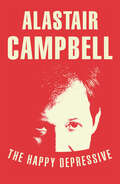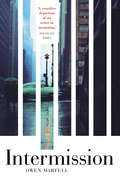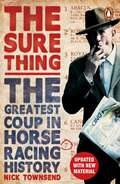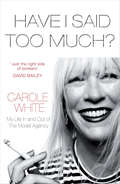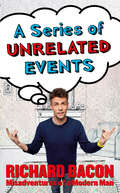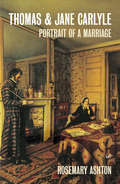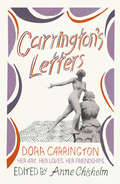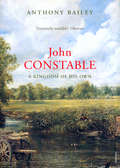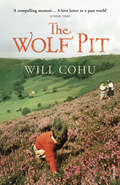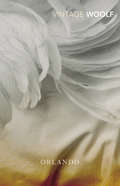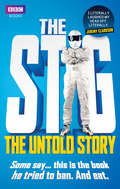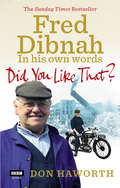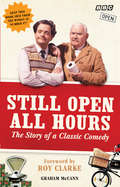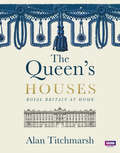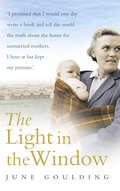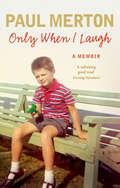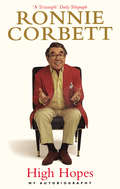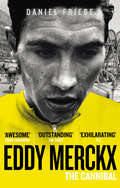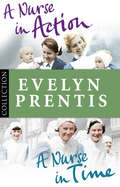- Table View
- List View
Cream: How Eric Clapton Took the World by Storm
by Dave ThompsonDave Thompson, author of Virgin's acclaimed Red Hot Chili Peppers biography, takes a new and very detailed look at the creation of one of the world's most influential bands. After all the streets of London had been covered in 'Clapton Is God' tributes, the three top rock instrumentalists of their time, all stars in their own right, came together to form Cream. Cream went on to become the first band to break openthe lucrative US market by dint of their live shows alone. Updated to include details of their recent tour, this definitive account goes on the road with them then and now, day by relentlessly hedonistic day.
Monsters Of Death Row
by Christopher Berry-Dee Anthony Gordon BrownFrom the cells of Death Row come the chilling, true-life accounts of the most heinous, cruel and depraved killers of modern times. Meet grisly killers such as Bill Joe Benefiel, the 'Superglue Monster', who glued his victims eyes and noses shut, causing them to suffocate. Or Willie Crain, the deviant fisherman, who put his victim into a lobster pot, where it was eaten by sea creatures.Many prisoners on ' the Row' have carried out serial murder, mass murder, spree killing and the desmemberment of bodies - both dead and alive. In these pages are to be found friends who have stabbed, hacked and ever filleted their victims. So meet the 'Dead Men and Women Walking' from the legion of the damned in the most terrifying true crime read ever.
Just a Mo: My Story
by Laila MorseThe reigning queen of Albert Square, Laila Morse shares her incredible story for the first time. This is a book that will shock, humble and inspire.
Shamed: The Honour Killing That Shocked Britain – by the Sister Who Fought for Justice
by Sarbjit Kaur AthwalIn 1998, Sarbjit Athwal was called by her husband to attend a family meeting. It looked like just another family gathering. An attractive house in west London, a large dining room, two brothers, their mother, one wife. But the subject they were discussing was anything but ordinary. At the head of the group sat the elderly mother. She stared proudly around, smiling at her children, then raised her hand for silence. ‘It’s decided then,’ the old lady announced. ‘We have to get rid of her.’‘Her’ was Surjit Athwal, Sarbjit’s sister-in-law. Within three weeks of that meeting, Surjit was dead: lured from London to India, drugged, strangled, and her body dumped in the Ravi River, never to be seen again.After the killing, risking her own life, Sarbjit fought secretly for justice for nine long, scared years. Eventually, with immense bravery, she became the first person within a murderer’s family ever to go into open court in an honour killing trial as the Prosecution’s key witness, and the first to waive her anonymity in such a trial. As a result of her testimony, the trial led to the first successful prosecution of an honour killing without the body ever being found.But her story doesn’t end there. Since the trial, her life has been threatened; her own husband arrested after an allegation of intimidation. Shamed is a story of fear and of horror – but also of immense courage, and a woman who risked everything to see that justice was done.
Moscow Mule
by James YoungA marvellously funny and sharply observed account of a journey to Russia by one of Britain's most talented young writers. Moscow - a labyrinth where the humans try to keep one step ahead of the roaches. Everyone on the move, some in search of the quick buck, and others just trying to survive. All dazzled by the neon glare of the western dream. The soviet monolith has broken down in tribalism, tribes who go to war not just on the streets but in overheated rooms, with drugs, vodka and Cindy Crawford carrier bags. James Young gives an unparalleled account of today's Moscow from the bottom side up. He takes us on a odyssey through this strange no man's land where East meets West, where the old certainties have gone, the KGB men wear Italian suits, the Mafia tycoonskis style themselves on the Godfather flicks and the rest are queuing to change dollars.
The Happy Depressive: In Pursuit of Personal and Political Happiness
by Alastair CampbellAre you happy? Does it matter?Increasingly, governments seem to think so. As the UK government conducts its first happiness survey, Alastair Campbell looks at happiness as a political as well as a personal issue; what it should mean to us, what it means to him. Taking in economic and political theories, he questions how happiness can survive in a grossly negative media culture, and how it could inform social policy. But happiness is also deeply personal. Campbell, who suffers from depression, looks in the mirror and finds a bittersweet reflection, a life divided between the bad and not-so-bad days, where the highest achievements in his professional life could leave him numb, and he can somehow look back on a catastrophic breakdown twenty-five years ago as the best thing that happened to him. He writes too of what he has learned from the recent death of his best friend, further informing his view that the pursuit of happiness is a long game.Originally published as part of the Brain Shots series, the pre-eminent source for high-quality, short-form digital non-fiction.
Intermission
by Owen MartellCaptivating and hypnotic writing from a prize-winning novelist, whose prose is reminiscent of Marilynne Robinson's and Paul Harding's.New York, June 1961. The Bill Evans Trio, featuring twenty-five year old Scott LaFaro on bass, play a series of concerts at the Village Vanguard that will go down in musical history. Shortly afterwards, LaFaro is killed in a car accident, and Evans disappears. Intermission tells the story of what happens next.In measured, evocative prose, Intermission takes a period from the life of one of America’s great artists and fashions it into a fiction of extraordinary imaginative skill and ambition. The novel inhabits the lives of four people in orbit around a tragedy, presenting an intense and moving portrait of the burden of grief, and of a man lost to his family and to himself. It is also a conjuring of a pivotal moment in American music and culture, and a unique representation of the jazz scene in the early 1960s. Intermission is a novel of pure control and power, certain to establish Owen Martell as one of the most promising young writers in Britain today.
The Sure Thing: The Greatest Coup in Horse Racing History
by Nick Townsend__________________The bookies always win. But one man has been proving them wrong for four decades. In the summer of 1975 Barney Curley, a fearless and renowned gambler, masterminded one of the most spectacular gambles of all time with a racehorse called Yellow Sam. With a meticulous, entirely legal plan involving dozens of people, perfectly timed phone calls, sealed orders and months of preparation, Curley and Yellow Sam beat the bookmakers and cost them millions. They said that it could never happen again. But in May 2010, thirty-five years after his first coup, Curley staged the ultimate multi-million-pound-winning sequel.The Sure Thing tells the complete story of how he managed to organise the biggest gamble in racing history - and how he then followed up with yet another audacious scheme in January 2014.
Have I Said Too Much?: My Life In and Out of The Model Agency
by Carole WhiteThere are model agents and there is Carole White …Every decade in Carole White’s life has been extraordinary, from her childhood in Colonial Ghana, her rebellious teenage years and own modelling career, to spending 30 years at the helm of her iconic London agency Premier.Christy, Naomi, Linda, Claudia, Cindy … White has shaped the careers of the most superlative names ever to grace a catwalk and was at the centre of the 90s supermodel storm in all its glory, drama and excess.There have been landmark court cases, size zero debates, tantrums and triumphs. And who could forget her starring role as the much-loved ‘witch’ in award-winning reality show The Model Agency?Carole’s got opinions and she’s not afraid to share them. Have I Said Too Much? is the frank and revealing story of the grande dame of modelling, as well as an exclusive insight in to this thrilling, glamorous and chaotic industry.
A Series of Unrelated Events
by Richard BaconHave you ever been stitched up to the national press by your best mate?Or unintentionally upset a band with a slip of the tongue on a live TV show?Or ruined a dinner party by transforming everything alcoholic into water?Hello. I’m Richard Bacon and this is A Series of Unrelated Events. All of the stories are true. All of them happened to me. I’ve made the mistakes so you don’t have to (you’re welcome). So now, if you should ever find yourself sobbing on top of a box of gherkins in the stockroom of a Mansfield McDonald’s… having a Twitter conversation with your mum while she’s pretending to be an illiterate dog… performing stand-up to an audience who are funnier than you are… or just letting down all of the children of Great Britain……you’ll know exactly what to do.
Thomas And Jane Carlyle: Portrait of a Marriage
by Rosemary AshtonThey were the most remarkable couple in London: the great sage Carlyle, with his vehement prophecies, and his witty, sardonic wife Jane. It was a strong, close, mutually admiring yet often mutually antagonistic partnership, fascinating to all who observed it. The Carlyles lived at the heart of English life in mid-Victorian London, but both were outsiders, a largely self-educated Scottish pair who took a sometimes caustic look at the society they so influenced - Carlyle through his copious writings, and both through their network of acquaintances and correspondents. Carlyle's fame was confirmed by his Sartor Resartus of 1843, The French Revolution, his lectures on heroes and hero-worship and by his radical account of contemporary industrial Britain in Past and Present, 1843. Both husband and wife were great letter-writers, Carlyle commenting on the matters of the day, dashing off pen portraits of those he met and Jane with her brilliant stories and her sharp, dry humour. Yet despite her brilliance, Jane suffered, especially from Carlyle's infatuation with the lion-hunting Lady Ashburton, and the tensions in their marriage grew. The letters they wrote, both to each other and to others, make theirs the most well-documented marriage of the nineteenth century and give us an unequalled portrait of a famously unhappy marriage. This moving and vivid biography describes their relationship with each other, from their first meeting in 1821 to Jane's death in 1866, and also their relationship with the world outside. Rosemary Ashton's inimitable blend of rigorous scholarship, warm sensitivity and lively wit makes this not only a portrait of a marriage but a picture of a whole age, elegant, erudite and entertaining.
Carrington's Letters: Her Art, Her Loves, Her Friendships
by Dora CarringtonCarrington's beguiling letters take us beyond the Bloomsbury group to discuss sexual mores, how to be an artist, and what it is to be truly oneself.Known only by her surname, Dora Carrington was the star of her year at the Slade School of Fine Art, and was friends with some of the greatest minds of her day, including Virginia Woolf, Rosamund Lehmann and Maynard Keynes. For over a decade she was the companion of homosexual writer Lytton Strachey, and - stricken without him- killed herself when he died in 1932. Though she never achieved the fame her early career promised, in her determination to live life according to her own nature – especially in relation to her work and her fluid attitude to sex, gender and sexuality – she fought battles that remain familiar and urgent today. Now, through her passionate, playful and honest letters, we can encounter the maverick artist and compelling personality afresh and in her own words.
John Constable: A Kingdom of his Own
by Anthony BaileyBorn in 1776 in East Anglia near the river Stour, John Constable was destined for his father's business of milling and grain-shipping. But he was obdurately opposed to this and persuaded his family he should become an artist instead. In the same determined spirit, he wooed Maria Bicknell in the teeth of opposition from her formidable grandfather, and persisted in painting landscapes at a time when history paintings and portraits were the fashion. Sometimes sharp and sarcastic, and often depressed, Constable in fact possessed a warm gift for intimate friendship. This is revealed in his letters to John Dunthorne, village handyman and housepainter, and to his best friend and patron, archdeacon John Fisher, to whom he wrote: 'I have a kingdom of my own, both fertile and populous - my landscape and my children'. In recent times, after a period of relative ignominy, Constable's influence on British landscape painting has been re-acknowledged, he has been more widely exhibited and his reputation has been reestablished as one of the masters of his genre. This important and absorbing biography explores his life and work, and highlights the dramatic tension between the two.
The Wolf Pit
by Will CohuIn 1966 Will Cohu's grandparents moved to Bramble Carr, a remote cottage on the Yorkshire moors. The summers and winters he spent there were full of freedom and light; only after childhood ended was he aware of the price the adults had paid for life in this most romantic of settings.Navigating family tensions and the trials of growing up, Will describes the close-knit community of North Yorkshire and his family's place within it: the shepherd probing the head-high snowdrifts for his flock; the pub landlord obsessed with military uniforms; the village doctor lost in his love for the purple moorland; Will's glamorous RAF parents; and, at the centre of the story, his beloved but enigmatic grandparents.The Wolf Pit is an enquiring love letter from Will Cohu to his family, and to a changing rural England that is passionate, frightening and funny.
Orlando
by Virginia WoolfVirginia Woolf's most unusual and fantastic creation, a funny, exuberant tale that examines the very nature of sexuality. WITH INTRODUCTIONS BY PETER ACKROYD AND MARGARET REYNOLDS As his tale begins, Orlando is a passionate young nobleman whose days are spent in rowdy revelry, filled with the colourful delights of Queen Elizabeth's court. By the close, he will have transformed into a modern, thirty-six-year-old woman and three centuries will have passed. Orlando will not only witness the making of history from its edge, but will find that his unique position as a woman who knows what it is to be a man will give him insight into matters of the heart. The Vintage Classics Virginia Woolf series has been curated by Jeanette Winterson and Margaret Reynolds, and the texts used are based on the original Hogarth Press editions published by Leonard and Virginia Woolf. **One of the BBC’s 100 Novels That Shaped Our World**
The Stig: The Untold Story
by Simon du BeaumarcheWho is The Stig? Where did he come from? Why does he never speak?To answer these questions, award-winning biographer Simon du Beaumarche spent a year chasing The Stig and talking to those closest to him, including Jeremy Clarkson, Richard Hammond, James May and leading figures from Formula 1, music, movies and the military.What he discovered is an explosive story of intrigue, influence and a sensational conspiracy that seeks to hide the truth about one of the 21st century’s greatest icons.Get behind the visor of the man, the myth, the driver, the legend, THE STIG.This book contains adult humour and some themes that may be unsuitable for children.
Did You Like That? Fred Dibnah, In His Own Words
by Don HaworthWhen Fred Dibnah debuted on television in 1979, British audiences immediately embraced a new cultural icon: a steeplejack from Bolton who fell in love with England's decaying industrial landscape and an exhaustive storyteller whose charm and wit was matched only by his down-to-earth manner. The Producer of that first film, Don Haworth, would go on to make nineteen films about this unlikely celebrity and true British eccentric.Did You Like That? collects the best stories from these films: colourful tales told by Fred himself, recounting key moments in his life, his experiences as a steeplejack, his fascination with machinery, his work as an engineer, craftsman, artist, inventor and steam enthusiast, and his forthright views on life in general.Told with true Northern grit, Did You Like That? is the story of a man who never shied away from a hair-raising challenge, and the closest thing to Fred's autobiography we're likely to get. In paperback for the first time, this is Fred's story, in his own words.
Still Open All Hours: The Story of a Classic Comedy
by Graham McCannFrom its first episode in 1973, Open All Hours was an instant hit. Audiences around Britain loved its familiar setting, good natured humour, and the hilarious partnership of Ronnie Barker and David Jason. Whilst it only ran for 26 episodes, it firmly cemented itself as a British comedy classic.To celebrate the 40th anniversary of the show in 2014, the BBC revived it for a one-off Christmas Special. Still Open All Hours was swamped by a tsunami of audience affection and the BBC promptly commissioned a full series. The first episode of the fifth series is expected to air in late 2014.With recollections from David Jason, his fellow cast members, and from the scriptwriter Roy Clarke, plus never before seen BBC archive material, acclaimed popular TV historian Graham McCann tells the inside story of this very British sitcom, with wit, insight and affection.
The Queen's Houses
by Alan TitchmarshThe Queen's life was dedicated to her public - every move was scrutinised, every word noted. But her homes were havens where peace could be found, away from watchful eyes; sanctuaries of private calm in a whirlwind life of public duty.In The Queen's Houses, Alan Titchmarsh takes us on a tour of the royal residences, examining the personal family stories behind these magnificent buildings. Through personal reflections, interviews with royal staff and meticulous historical research, Alan looks beyond the formal grandeur of Buckingham Palace, the imposing structure of Windsor Castle and the private escape offered by Balmoral and others.Illustrated with intimate family photographs and evocative memorabilia, The Queen's Houses offers a glimpse of life lived behind the state banquets and sovereign duties - a respectful study of the royal family at home.
The Light In The Window
by June Goulding'I promised that I would one day write a book and tell the world about the home for unmarried mothers. I have at last kept my promise.'In Ireland, 1951, the young June Goulding took up a position as midwife in a home for unmarried mothers run by the Sacred Heart nuns. What she witnessed there was to haunt her for the next fifty years. It was a place of secrets, lies and cruelty. A place where women picked grass by hand and tarred roads whilst heavily pregnant. Where they were denied any contact with the outside world; denied basic medical treatment and abused for their 'sins'; where, after the birth, they were forced into hard labour in the convent for three years. But worst of all was that the young women were expected to raise their babies during these three years so that they could then be sold - given up for adoption in exchange for a donation to the nuns.Shocked by the nuns' inhumane treatment of the frightened young women, June risked her job to bring some light into their dark lives. June's memoir tells the story of twelve women's experiences in this home and of the hardships they endured, but also the kindness she offered them, and the hope she was able to bring.
Only When I Laugh: My Autobiography
by Paul MertonKnown for his intelligent and often surreal humour, Paul Merton’s weekly appearances on BBC1’s Have I Got News For You – as well as Radio 4’s Just A Minute and his travel documentaries – have seen him become an artfully rebellious fixture in our lives for over 25 years.He also has a real story to tell. In ONLY WHEN I LAUGH, his rich and beautifully-observed autobiography, Paul takes us on an evocative journey from his working-class Fulham childhood to the present day. Whether writing about school days, his run-ins with the nuns and other pupils; his disastrous first confession; his meatpacking job; taking acid; leaving home to live in bedsit; his early brushes with the opposite sex – and not forgetting his repeated attempts to break into the world of comedy – Paul’s writing is always funny, poignant and revealing. And when his star finally ascends in the atmospherically drawn 1980s alternative cabaret scene there is a sense of excitement, energy, camaraderie, momentum and dramatic impending success……And then CRASH! In an unflinching and brilliantly written section that defines the book, we experience the disorienting and terrifying sustained manic episode that he suffered which landed him in a psychiatric hospital. These, and other tougher moments, are written about candidly and with sensitivity and honesty. Yet throughout ONLY WHEN I LAUGH, Paul Merton succeeds in telling his life story entertainingly, with warmth, humour and a big bucket load of wit. Ultimately uplifting, it is the story of a fascinating life, brilliantly told – and one of the best memoirs of the year.
High Hopes: My Autobiography
by Ronnie CorbettA true great of British comedy, Ronald ‘Ronnie’ Corbett, is hailed as one of the finest comedians of his generation.Son of an Edinburgh baker, Ronnie rose to fame as one half of the infamous Two Ronnies alongside Ronnie Barker. Known for his versatility, quick-wit, family-friendly dialogue, and meandering monologues, Corbett was a staple of British television for more than 50 years. In his autobiography, he tells the complete story, from his school technique of estimating the height of a girl before daring to ask her to dance, to his days as a night club barman in London, and finally, to his decades long career as a stand-up and sitcom star. Including tales of how he first met David Frost, John Cleese and Michael Palin, this book is written with all of Ronnie’s trademark warmth and wit.Celebrating his life and career, this is Ronnie’s own honest and definitive account of his truly dramatic journey.
Williams: The legendary story of Frank Williams and his F1 team in their own words
by Maurice HamiltonA story of true drive – now the topic of a major documentaryFounded in 1977 by Sir Frank Williams and Patrick Head, Williams F1 represents the last of the true independent teams; a company devoid of corporate dogma and run by enthusiasts driven by a love of racing and the satisfaction that comes with beating the rest of the world. Since its first Grand Prix victory at Silverstone on 14 July 1979, the team has won a further 116 GPs, delivered seven World Champions - among them Nigel Mansell and Damon Hill - and won nine Constructors Championships.This is the definitive history of the Williams team as told by those who have worked for Williams past and present. At the heart of the book are Sir Frank's personal recollections, along with memories and anecdotes from those at every level: from the shop floor to the upper strata of management; from the mechanics and machinists to the drivers - Mansell, Hill, Alain Prost and Alan Jones among them. It relates both the incredible highs of winning against the odds while never shying the terrible lows - the tragic deaths of Piers Courage in 1970 and Ayrton Senna in 1994 among them.Conveying the history and soul of a unique band of people, Williams F1 explains exactly why the Williams team is held in more affection than any other team in Britain, if not the world.
Eddy Merckx: The Cannibal
by Daniel Friebe'The whole point of a race is to find a winner... I chose to race, so I chose to win.' For 14 years between 1965 and 1978, cyclist Edouard Louis Joseph Merckx simply devoured his rivals, their hopes and their careers. His legacy resides as much in the careers he ruined as the 445 victories - including five Tour de France wins and all the monument races - he amassed in his own right. So dominant had Merckx become by 1973 that he was ordered to stay away from the Tour for the good of the event.Stage 17 of the 1969 Tour de France perfectly illustrates his untouchable brilliance. Already wearing the yellow jersey on the col du Tourmalet, the Tour's most famous peak, Merckx powered clear and rode the last 140 kilometres to the finish-line in jaw-dropping solitude, eight minutes ahead of his nearest competitor.Merckx's era has been called cycling's Golden Age.It was full of memorable characters who, at any other time, would all have gone on to become legends. Yet Merckx's phenomenal career overshadowed them all. How did he achieve such incredible success? And how did his rivals really feel about him? Merckx failed drug tests three times in his career - were they really stitch ups as he claimed? And what of the crash at a track meet in Blois, France that killed Merckx's pacer Fernand Wambst, which Merckx claimed deeply affected him psychologically and physically? Or the attack by a spectator in 1975?Despite his unique achievements, we know little about the Cannibal beyond his victories. This will be the first comprehensive biography of Merckx in English, and will finally expose the truth behind this legendary man.
Evelyn Prentis Bundle: A Nurse in Time/A Nurse in Action
by Evelyn PrentisDesperate circumstances were something Evelyn Prentis had to get very used to when she began her life as a nurse. It was in 1934 that Evelyn left home for the first time to enrol as a trainee at a busy Nottingham hospital in the hope of £25 a year. A Nurse in Time is Evelyn's affectionate and funny account of those days of dedication and hardship, when never-ending nightshifts, strict Sisters and permanent hunger ruled life, and joy was to be found in a late-night pass and a packet of Woodbines.The second memoir in this collection is A Nurse in Action. Surprising Matron as well as herself, Evelyn Prentis managed to pass her Finals and become a staff-nurse. Encouraged, she took the brave leap of moving from Nottingham to London - brave not least because war was about to break. Not only did the nurses have to cope with stray bombs and influxes of patients from as far away Dunkirk, but there were also RAF men stationed nearby - which caused considerable entertainment and disappointment, and a good number of marriages ...But despite all the disruption to the hospital routine, Evelyn's warm and compelling account of a nurse in action, shows a nurse's life would always revolve around the comforting discomfort of porridge and rissoles, bandages and bedpans.
